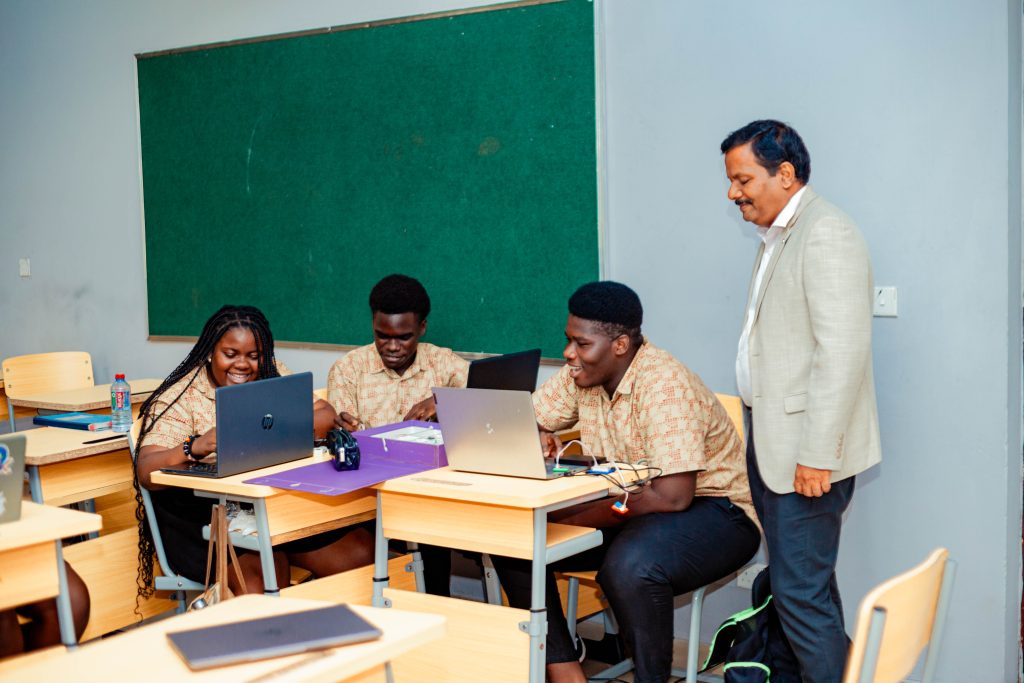Key Points at a Glance
Intrinsic motivation—driven by curiosity and personal interest—is more effective long-term than external rewards.
Student autonomy, mastery, and purpose significantly increase engagement and persistence in learning.
Supportive environments and feedback help students stay motivated, even when learning gets tough.
Why do some students thrive in the classroom while others lose interest or give up easily? The difference often comes down to motivation.
Understanding the science of motivation in learning can help educators, parents, and schools transform disengaged learners into passionate, self-driven achievers.
Motivation isn’t just about rewards or punishments—it’s a complex mix of psychological, emotional, and environmental factors.
Schools like Morgan International Community School (MICS) understand this well, and that is why their approach emphasizes not just what students learn, but why they want to learn it.
Let’s explore what research says about motivation—and how to apply those insights effectively.
1. Intrinsic vs. Extrinsic Motivation
At the core of learning psychology is the distinction between intrinsic and extrinsic motivation.
Intrinsic motivation comes from within—a desire to understand, improve, or explore a topic because it’s personally meaningful.
Extrinsic motivation is driven by external rewards such as grades, praise, or punishment.
What works best?
While extrinsic motivators can produce short-term effort, intrinsic motivation leads to deeper learning, better retention, and greater creativity.
How to develop intrinsic motivation:
Connect lessons to students’ personal interests and goals.
Allow room for choice and exploration in assignments.
Encourage curiosity through open-ended questions.
At MICS, learning is often tied to real-world applications, and it encourages students to see value beyond the classroom.
2. The Power of Autonomy, Mastery, and Purpose
According to Daniel Pink’s motivation theory, the most engaged learners experience:
Autonomy: The ability to make choices in how they learn.
Mastery: The drive to improve and overcome challenges.
Purpose: A sense that their learning matters.
Practical strategies:
Let students choose their project topics or how to present their work.
Set stretch goals with regular feedback to encourage mastery.
Show how lessons connect to real-life issues or future careers.
At MICS, students engage in cross-curricular projects that develop not just knowledge, but purpose and problem-solving skills.
An example is when students of MICS joined the BuzStopBoys in a cleanup exercise. The students also donated supplies like gloves, dustbins, and jackets to support the BuzStopBoys’ sanitation efforts. See their collaboration below:
3. Creating a Supportive Learning Environment
Motivation thrives in a culture of encouragement, clarity, and trust.
Educators can boost motivation by:
Providing timely and specific feedback that focuses on effort and improvement.
Celebrating progress, not just perfection.
Creating safe spaces where students feel free to ask questions, fail, and try again.

4. Using Gamification and Rewards Wisely
While rewards can be useful in building habits or encouraging reluctant learners, they must be used carefully.
Best practices:
Use rewards for effort-based behavior (e.g., completing tasks, persistence).
Transition from external to internal motivators as students grow.
Avoid over-relying on rewards, which may reduce intrinsic interest over time.
Gamification—using elements like points, levels, or badges—can make learning fun and interactive when applied intentionally.
5. Encouraging a Growth Mindset
A growth mindset, coined by psychologist Carol Dweck, is the belief that intelligence and abilities can be developed with time and effort.

Students with a growth mindset are more likely to:
Embrace challenges
Learn from mistakes
Stay motivated even after setbacks
How to develop it:
Replace “I’m not good at this” with “I’m not good at this yet.”
Share stories of famous failures and comebacks.
Provide learning journals or reflection prompts to track improvement.
6. Encouraging Peer Learning and Social Motivation
Students are motivated not just by teachers or grades—but by each other.
What helps:
Group projects that promote collaboration
Peer mentoring systems
Class discussions and knowledge-sharing
MICS encourages team-based learning where students motivate one another, reinforcing both academic and interpersonal growth.
Final Thoughts
Motivation is not a one-size-fits-all concept. It’s personal, dynamic, and deeply rooted in how students feel about themselves, their learning, and their future.
By focusing on autonomy, mastery, purpose, and emotional support, educators can unlock each student’s inner drive and inspire them to thrive beyond the classroom.
When the science of motivation is put into practice, the results are not only better grades—but better learners for life.
